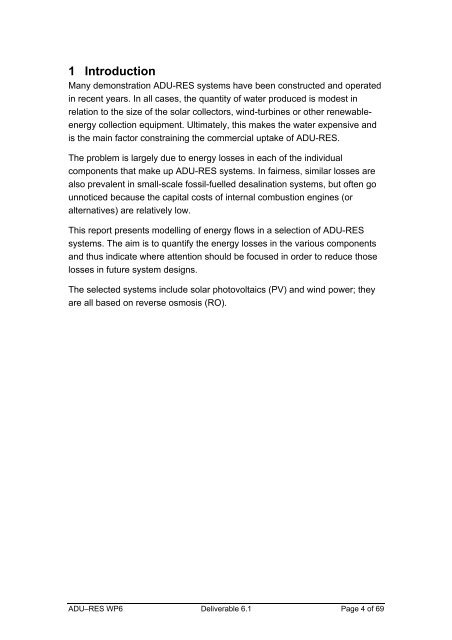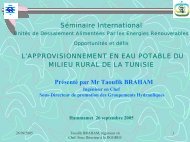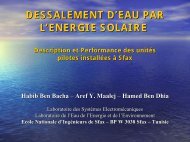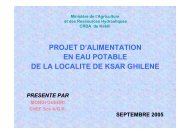Energy consumption modelling - ADU-RES
Energy consumption modelling - ADU-RES
Energy consumption modelling - ADU-RES
You also want an ePaper? Increase the reach of your titles
YUMPU automatically turns print PDFs into web optimized ePapers that Google loves.
1 Introduction<br />
Many demonstration <strong>ADU</strong>-<strong>RES</strong> systems have been constructed and operated<br />
in recent years. In all cases, the quantity of water produced is modest in<br />
relation to the size of the solar collectors, wind-turbines or other renewableenergy<br />
collection equipment. Ultimately, this makes the water expensive and<br />
is the main factor constraining the commercial uptake of <strong>ADU</strong>-<strong>RES</strong>.<br />
The problem is largely due to energy losses in each of the individual<br />
components that make up <strong>ADU</strong>-<strong>RES</strong> systems. In fairness, similar losses are<br />
also prevalent in small-scale fossil-fuelled desalination systems, but often go<br />
unnoticed because the capital costs of internal combustion engines (or<br />
alternatives) are relatively low.<br />
This report presents <strong>modelling</strong> of energy flows in a selection of <strong>ADU</strong>-<strong>RES</strong><br />
systems. The aim is to quantify the energy losses in the various components<br />
and thus indicate where attention should be focused in order to reduce those<br />
losses in future system designs.<br />
The selected systems include solar photovoltaics (PV) and wind power; they<br />
are all based on reverse osmosis (RO).<br />
<strong>ADU</strong>–<strong>RES</strong> WP6 Deliverable 6.1 Page 4 of 69







